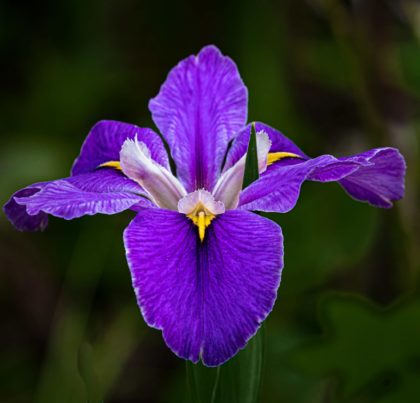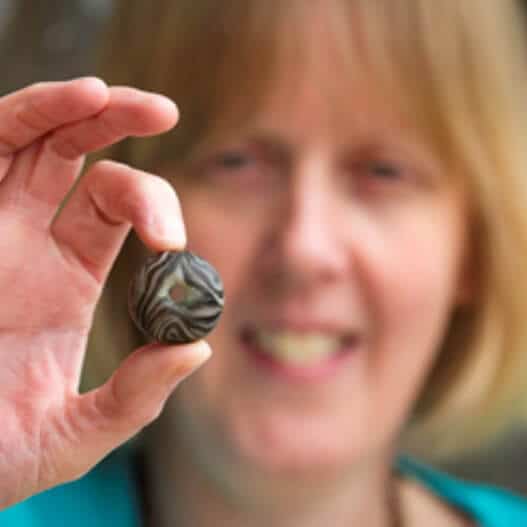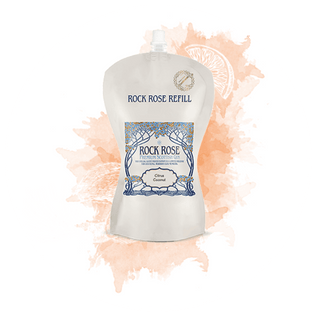Orris root (Rhizoma iridis) is generally considered the collective term for the dried and powdered rhizomes, or ‘bulbs’ of Iris florentina, Iris germanica and Iris pallida, all flowering plants from the family Iridaceae. The Iridaceae family, takes its name from Iris, the Greek goddess of the rainbow, reflecting the many colours of the different types of iris. In fact, orris might be a corruption of iris.
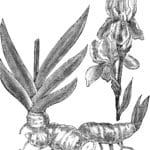
Orris root is also known as Queen Elizabeth Root, supposedly named after Queen Jezebel who is mentioned in the Old Testament. According to the Book of Kings, Jezebel was the wife of King Ahab, the ruler of the kingdom of Israel. Jezebel is now considered to be the archetypal wicked woman as according to Biblical narrative by interfering with the exclusive worship of the Hebrew God, Yahweh, disregarding the rights of the common people, and by defying the great prophets Elijah and Elisha, she provoked the internecine strife that enfeebled Israel for decades.
A lot of work goes into harvesting orris, after three to four years of growth, the roots are dug up. When harvested in July or August, orris root is odourless, and takes three to five years to mature, and develop a floral, sweet smell, most often compared to violets. Once mature this botanical is ground into a powder. In perfume manufacture, the most sought-after type of orris root comes from Iris pallida, which flourishes in the warmth of the Mediterranean. In Ancient Egypt, Greece, and Rome, orris root from Iris pallida was ground into a powder worn on the face and in the hair, it was placed into pomanders, and was also the basis for perfumed sachets which were worn on the body. Chanel No. 5, the first perfume launched by French couturier Gabrielle ‘Coco’ Chanel in 1921, also contains orris root from Iris pallida.

Orris root possesses anti-inflammatory properties which explains the botanicals traditional use as a remedy for colds, sore throats, and toothache. The juice of fresh orris root is said to be one of the finest natural remedies known for dropsy – an old-fashioned term for fluid retention in the body – now known as oedema, which often causes swelling in the feet and ankles. In magical circles, orris root is believed to be particularly good for attracting a lover. This is achieved by secreting the botanical in a potential lover’s food. Traditionally, in Japan, orris root was hung around the eaves of houses to magically protect the dwelling and its inhabitants from evil spirits.
Typically, orris root used in the production of gin has been dried for at least five years and is the powered roots of the white coloured bearded Iris florentina – meaning ‘the iris from Florence’. Orris root derived from Iris florentina adds violet and sweet earthy and woody notes to gin. However, in gin manufacture orris root is mainly used for its fixative qualities, binding the flavours of the other botanicals together, reducing volatility and helping the gin to keep the integrity of its flavour profile for longer.
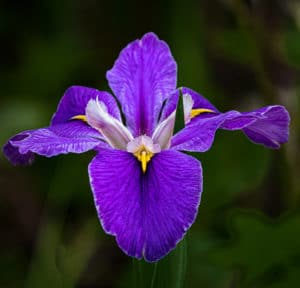
Orris root powder is often included as one of the many ingredients of Ras-el-Hanout, considered to be one of the world’s most complex blends of herbs and spices. Ras-el-Hanout is used across the Middle East and North Africa, primarily in Algerian, Moroccan and Tunisian cuisine. The name Ras-el-Hanout literally means ‘top of the shop’ as the mixture usually contains as many as twenty or more expensive ingredients, including cinnamon, cumin, rose petals and orris root.
By Joanne Howdle, our Tour and Events Co-ordinator.


